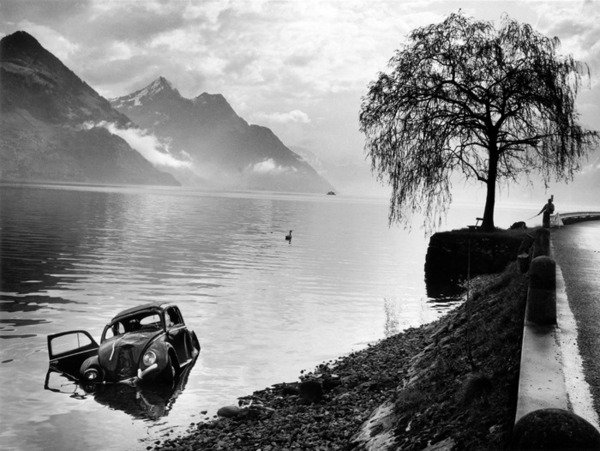Two Exhibitions
dal 12/11/2014 al 14/2/2015
Segnalato da
Ai Weiwei
Roy Arden
John Baldessari
Walead Besthy
Monica Bonvicini
Mircea Cantor
Vija Celmins
Jake und Dinos Chapman
Bruce Conner
Thomas Demand
Luc Delahaye
Sam Durant
Harold Edgerton
Dara Friedman
Cyprien Gaillard
Ori Gersht
Jack Goldstein
Douglas Gordon
Felix Gonzalez Torres
Mona Hatoum
Larry Johnson
Yves Klein
Michael Landy
Christian Marclay
Gordon Matta Clark
Steve McQueen
Gustav Metzger
Raphael Montañez Ortiz
Juan Munoz
Laurel Nakadate
Yoshitomo Nara
Arnold Odermatt
Yoko Ono
Pipilotti Rist
Ed Ruscha
Thomas Ruff
Joe Sola
Shōmei Tōmatsu
Jean Tinguely
Jeff Wall
Andy Warhol
Christopher Wool
Kerry Brougher
Russell Ferguson
12/11/2014
Two Exhibitions
Kunsthaus Graz am Landesmuseum Joanneum, Graz
'Damage Control: Art and Destruction Since 1950' presents a phenomenon that extends beyond art: in particular tracing history from a post war period influenced by American media images. 'Damage Control Body : Art and Destruction 1968-1972' is dedicated to the aspect of artistic destruction.

Damage Control: Art and Destruction Since 1950
Curated by: Kerry Brougher, Russell Ferguson
Since the mid-20th century artists of various disciplines have demonstrated a growing interest in the concept of destruction or dismantling. Damage Control examines this theme from a historical perspective.
The art of our time has again and again reflected a world of violence: as a reaction to the two world wars, to the atomic bomb, or to images of annihilation in the media. Destruction pervades art production and has been employed by artists as a means of conveying institutional critique or expressing cultural anxiety while, often, keeping specific emotional or cultural references at a distance.
Damage Control presents a phenomenon that extends beyond art: in particular tracing history from a post war period influenced by American media images, but the exhibition also refers to how today’s fears are determined by current threats such as terrorism and natural disasters - whether real or imagined.
Drawn in part from the Hirshhorn Museum collection, the exhibition brings together groundbreaking works of international significance not just from the branches of painting, film and photography but also from sculpture, installation and performance.
In the Kunsthaus Graz we show two artistic positions from Austria that complement the exhibition Damage Control: a light installation, its traffic light colours (green, orange, red) recalling symbols of technical control buttons, greets the visitors in the foyer. With this work Melitta Moschik seeks to allude to the possibilities of autonomous decisions. Werner Reiterer, in contrast, reflects the exhibition theme in his own highly ironic way by means of three drawings: they concern the daily destruction in street traffic on the one hand, while the artist proposes a provocative installation on the other, which in its execution could have resulted in the de(con)struction of the Kunsthaus. The works can be seen as critical counter-designs to a society of spectacle, and question the meaning of autonomy in the face of a destructive society.
The international tour of Damage Control: Art and Destruction Since 1950 received major funding from the Terra Foundation for American Art, and is also made possible through generous support from the Swiss Arts Council Pro Helvetia and the Japan Foundation.
Expanding upon the exhibition in the Kunsthaus Graz, the BRUSEUM is showing the exhibition Damage Control. Body Art and Destruction 1968-1972, which is devoted to a special aspect of artistic destruction: Body Art in its early stages from the angle of Actionist self-harming.
Organized by Hirshhorn Museum, Smithsonian Institution, Washington DC (USA) in association with Mudam Luxembourg and Kunsthaus Graz
----
Damage Control Body : Art and Destruction 1968-1972
curated by Roman Grabner
To mark the exhibition Damage Control: Art and Destruction Since 1950, which will be shown in the Kunsthaus Graz in autumn 2014, the BRUSEUM is dedicated to that aspect of artistic destruction which was neglected by the show conceived by the Hirshhorn Museum in Washington: Body Art in its early days from the special angle of actionist self-harming.
Thus a unique opportunity presents itself to place Günter Brus’ late actions within the international context, and to examine whether he was really the first to injure his body as part of a performance, and so whether he can be considered the “founder of Body Art”, as he is time and again described.
Image: Arnold Odermatt, Buochs, 1965. © Urs Odermatt, Windisch, Switzerland; Courtesy Galerie Springer Berlin, © Bildrecht, Wien 2014
Press contact:
Sabine Bergmann Telephone +43-316/8017-9211 presse@museum-joanneum.at
Opening: 13.11.2014, 7 p.m.
Kunsthaus Graz, Space02
Lendkai 1 - 8020 - Graz
Hours: Tuesday–Sunday 10am–5pm



